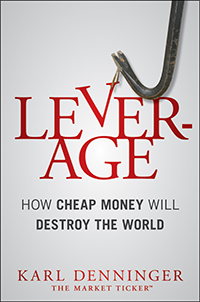Total nonfarm payroll employment was essentially unchanged in October (+12,000), following an average monthly gain of 194,000 over the prior 12 months. In October, employment continued to trend up in health care and government. Temporary help services lost jobs. Employment declined in manufacturing due to strike activity. (See table B-1.)
Well now that is a miss.
But this is not-so-good:
Health care added 52,000 jobs in October, in line with the average monthly gain of 58,000 over the prior 12 months. Over the month, employment rose in ambulatory health care services (+36,000) and nursing and residential care facilities (+9,000).
That's close to a double from the averages over quite some time, but its the "new normal" and yet our health care is, when you look at objective metrics, both ridiculously more-expensive and not as effective. So this says that cost has gone up but output, measured by both quality and quantity of life per-person, hasn't. This is just about math with no adjustment for how someone feels (which does matter, but in economic terms... not so much.)
Within professional and business services, employment in temporary help services declined by 49,000 in October. Temporary help services employment has decreased by 577,000 since reaching a peak in March 2022.
"Layoffs" start here. There is no severance required. When companies find themselves with what they perceive as "too much" labor the first people who get cut are temporary workers. Here we go.
I've been tracking for 20+ years the 12 month adjusted employment number (for working-age population) and it has been in the dumps; not having a positive month since last November. The particularly-troubling shift in that number has stubbornly refused to show up in the headline or other metrics, including employment/population ratio or weekly paychecks -- until now.
The market's immediate reaction was not to collapse; the best read on that is futures players think The Fed will add more gasoline to the liquidity fire. We'll see on that; I have maintained their original 50bips was a large policy mistake, still believe it was, and that inflation is coming roaring back in the early part of next year no matter who wins Tuesday. The bigger question here, particularly with the revisions in this report (August, specifically, was revised down from +159 to +78, so by half) leads one to ask lots of questions; sampling error, of course, is always real but when you miss by 50% and all the misses are in one direction it's hard to believe that's the explanation.
This time, however, all the internal data sets -- weekly checks .vs. hourly rate, employment rates among all four educational attainment groups and more tracked the headline number, so I see nothing in this specific report that flags as being wrong, whether from sampling error or otherwise.
IMHO something wicked this way comes, and softening employment into an inflationary spike in another 2-3 months is exactly the sort of 1970s outcome that occurred from what, from my analysis, looks like the same policy error that was made then.


